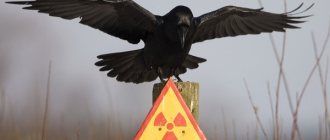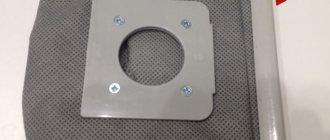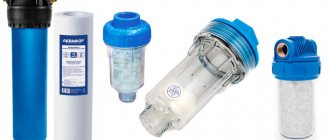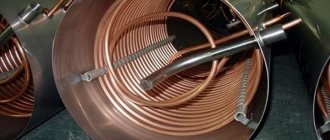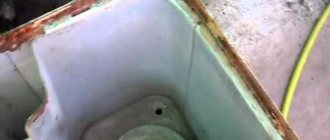When buying a vacuum cleaner for your home, carefully study the technical characteristics and design features, which determine the quality of cleaning and operating conditions. More and more manufacturers are abandoning the dust bag and using a cyclone filter for a vacuum cleaner - a large plastic container in which waste is separated.
What is the operating principle of such a unit, what are its advantages over traditional devices? Let's look at these questions in order, and also give a brief overview of cyclonic vacuum cleaners.
How does a cyclone filter work?
The principle of operation of the cyclone filter is to clean the air coming out of the vacuum cleaner. As the vacuum cleaner sucks in air, debris enters the cyclone filter from the side, thereby creating spiral movements.
Large debris is usually attracted to the walls, and dust swirls around the filter. When the air flow reaches the end of the filter, it reverses its direction and suddenly loses speed. This process allows large debris to fall into the dust bin. Next, the air, cleared of debris, comes out through the exhaust hole of the vacuum cleaner.
Operating principle of cyclone dust collectors
Cyclone dust collectors, more often called simply cyclones, belong to the category of mechanical inertial precipitators, in which dust particles suspended in the air are deposited on the internal walls of the cyclone under the influence of inertia (centrifugal force) that occurs when the air flow is tangentially introduced into the chamber of the dust collection device. For the technical implementation of inertial dust deposition in a cyclone, a design solution is used, which is basic for all numerous designs. The classic version of the cyclone-dust collector is represented by the following structural elements:
- pos. 1 – dust bin;
- pos. 2 – conical bottom of the cyclone;
- pos. 3 – cylindrical shell of the cyclone body;
- pos. 4 – tangential pipe for introducing dusty air;
- pos. 5 – cyclone cover;
- pos. 6 – pipe for removing purified air;
- pos. 7 – central exhaust pipe.
The cyclone body is assembled from a cylindrical shell (item 3), a conical bottom (item 2) and a cover (item 5). The bottom (item 2) and the dust bin (item 1) are given a conical or pyramidal shape. This ensures complete collection of deposited dust in the dust collector and its subsequent unloading as the hopper fills. Normal operation of the cyclone will be ensured only with a sealed bunker, otherwise dust with the flow of exhaust air will leak through the upper outlet channels.
The tangential pipe (item 4), also called the tangential inlet, is necessary to direct the incoming air flow along the forming surface of the cylindrical shell of the housing (item 3).
It is important! Tangential (from the Latin tangens - touching) is usually called the direction tangent to the shape-forming curve of a spatial body. In the case of a cylindrical cyclone body, the tangential pipe is welded in such a way that the direction of movement of the incoming air flow corresponds to the direction of the tangent to the generatrix of the cylinder, that is, to the circle. With tangential input, the air flow along with dust particles acquires a helical movement around the central exhaust pipe, directed downward along the conical bottom to the dust bin.
The dimensions and geometric shapes of the basic structural elements of various modifications of cyclones can vary significantly. Some models of cyclones are equipped with volutes, sprockets, sockets and other specific devices for turning up the purified air.
The principle of inertial separation used in the operation of a cyclone is as follows.
- A flow of dusty air is supplied to the cyclone body through a tangential pipe (item 4) tangentially to its cylindrical shell (item 3).
- In the cyclone, a rotational-translational movement of the air flow is formed, during which centrifugal force begins to influence the dust particles.
- Under the influence of centrifugal force, dust particles are ejected from the air mass to the walls of the cyclone, pressed against their surface, settle on them and flow down into the dust collector.
Note! The magnitude of the centrifugal force during rotation in the cyclone is determined by the formula:
F = m*( Vtang )2 /R, where m is the mass of the dust particle, Vtang is the tangential component of the velocity of the incoming air flow; R is the radius of the cylindrical shell of the cyclone.
For typical operating conditions of cyclones, when Vtang = 15 m/s and R = 60 cm (the diameter of the cyclone is 1.2 m), the value of the centrifugal force F is almost 39 (!) times greater than the force of gravity, which “pulls” the dust particle down. In some cyclone designs, its value is hundreds of times higher than gravity. Therefore, centrifugal force sharply increases the intensity of dust deposition in the cyclone chamber.
- The dust-free air flow through the central exhaust pipe (item 7) is discharged through the pipe (item 6) from the cyclone into the atmosphere.
Pros and cons of a cyclone
The main advantages of a cyclone filter:
- deep cleaning of the surface due to multi-level filtration;
- minimal dust emissions when air exits the vacuum cleaner;
- convenient cleaning of the filter and dust collector;
- compactness, since the filter usually has small dimensions (one of the reasons for its frequent use on vertical vacuum cleaners);
- the ability to wash all parts of the structure;
- The absence of dust bags saves money.
Also worth noting is the strength of the filter container, which, unlike cloth or paper bags, can hold back glass or nails. Typically, vacuum cleaners with cyclone filters have filling indicators, but if they are absent, clogging can be determined by a decrease in suction power.
With all its advantages, the cyclone filter also has a number of disadvantages:
- rapid reduction in power when clogged;
- increased noise level;
- increased cleaning time due to low power;
- passage of small dust particles.
Since in standard models of vacuum cleaners with cyclone filters, dust microparticles fly out with the exhaust air stream, it is recommended for allergy sufferers to purchase a model with an aquafilter and an increased level of filtration.
Manufacturing of cyclone elements
On specialized Internet forums you can find drawings of all components of the unit, which are available for making them yourself. Using improvised means, a household (or better yet, an industrial) vacuum cleaner is often remade. Additionally required:
- a set of hoses made of translucent corrugated material (this will facilitate visual control of dust particles settled inside). For chip extraction, rubber hoses are more practical;
- a soundproofing box that will perform two functions - it will reduce the noise level in the workshop, and provide additional protection for all machines and power tools located there from static electricity periodically accumulated by dust. For this purpose, you can make the box yourself from plywood, and decorate the inside with any type of sound insulator;
- air ducts for purified air: assembled with your own hands from a thin aluminum sheet and connected to each other with folds;
- waste collection container - can be made from an ordinary construction bucket with a capacity of 20 liters or more, which is sealed with the body of a homemade cyclone using a corrugated hose;
- filter (you can use a filter from trucks), which is installed on the outlet pipe.
A vacuum cleaner converted with your own hands for the needs of dust removal is checked: first at idle, passing normal air through the system, and then with the vacuum cleaner connected to a working machine.
If you find an error, please select a piece of text and press Ctrl+Enter.
Source: stankiexpert.ru
Types of cyclone filters
Vacuum cleaners are divided into three types: vertical, horizontal and automatic robotic. Each of them differs in maximum power and design. For example, in manual vacuum cleaners, the filters are located on the handle itself and are small in size, which makes them compact and quickly clog.
On standard vacuum cleaners, the cyclones are in a horizontal position and have large volumes, which increases the power and quality of cleaning. Robot vacuum cleaners have too small filters, so the quality of their cleaning is in last place, except for premium equipment with innovative technologies.
Depending on the type of vacuum cleaner, the appearance and design of the filter changes, but the procedure for creating an inertial flow is similar.
How to choose: recommendations
The best advice is very simple - choose based on the features of your home and technical specifications
For example: the normal power of a cyclone vacuum cleaner is 300-350 W. We should not forget that before taking a powerful vacuum cleaner, you should evaluate the condition of the wiring. Also, a vacuum cleaner with too much traction force can easily damage the coatings in the house.
A good advantage is the remote control or switch on the handle. Subtleties like these will help you avoid trouble when trying to change the suction strength.
Before purchasing, it is important to take into account such important details as the noise level, design or weight of the device.
Vacuum cleaners with cyclone filter
The difference between a cyclone filter and others is the suction system and the method of processing debris. In appearance, this is an ordinary cylinder with a filter, but the procedure for drawing in and swirling the flow goes through several stages.
Design Features
Under the influence of centrifugal force, debris is separated from the air, which prevents it from penetrating back into the room with the exhaust. The flask, where the swirling process occurs, usually consists of transparent plastic, so you can see not only the blockage, but also the operation of the cyclone.
Principle of operation
Air containing debris is drawn into the side opening of the filter by the vacuum cleaner, thereby creating a centrifuge. With a spiral vortex, debris is separated from the main flow and leans against the walls of the container. Dust microparticles swirl longer and may even remain in the flow. To filter it, another filter in the form of foam rubber or fabric is already installed. Multi-level cleaning requires high power, so when buying a vacuum cleaner, consider this parameter first.
Popular brands of cyclone vacuum cleaners
The most popular brands of vacuum cleaners with different types of designs:
- Dyson. The brand produces mainly vertical cordless vacuum cleaners. The main difference from analogues is the universal and in-depth air purification, which practically does not allow microscopic dust particles to pass through.
- Samsung. The famous brand is popular among fans of horizontal vacuum cleaners. The company regularly develops unique technologies that improve the quality and convenience of home cleaning. Of the latter, we can highlight the Anti-Tangle function, which significantly increases engine speed. Accordingly, the swirl speed also changes and does not allow long debris to wrap around the filter.
- Xiaomi. The Chinese brand is famous for its robotic vacuum cleaners, which come with a wide variety of functions. Despite its small design, the vacuum cleaner has high power. However, the small dust container gets clogged quite quickly.
Tips for use
Caring for the cyclone filter is quite simple - disconnect the structure from the vacuum cleaner and open it. Empty the debris and put the filter back in. Unlike the aqua function, the container does not need to be rinsed with water, however, if necessary, you can wipe it with a wet sponge and soap or detergent. The main condition is to dry the filter before cleaning, since dust residues can accumulate into a single mass and block the free passage of air, which can lead to damage to the device.
How to choose a vacuum cleaner with a cyclone filter
On the market you can find a wide variety of brands with a huge list of functions, but not all of them will be in demand during operation. Choose a vacuum cleaner only from reputable brands, since cheap devices with great functionality may not correspond to reality and quickly fail.
You also need to decide on the type of vacuum cleaner. If cleaning will be done in one or more rooms with small accumulations of garbage, buy a vertical design with a power cord or battery. The cyclone filter in them works quite effectively, and is easy to remove and clean.
For large premises and cleaning companies, it is recommended to choose among horizontal vacuum cleaners, as they have greater power and a capacitive dust collector. In this case, the centrifuge works faster, which allows you to efficiently clean the surface from dust.
Efficiency of cyclones
The efficiency of cyclones is characterized by the degree of cleaning, which shows in percentage terms the amount of settled dust in comparison with the dust content in the incoming air. For the most common cyclones of the CN type, the cleaning efficiency reaches the following indicators:
- up to 99.5% - for particles with a nominal diameter of 20 microns;
- up to 95% - for particles with a diameter of 10 microns;
- 83% - for small particles with a diameter of 5 microns.
How to make a cyclone filter yourself: step-by-step guide
In the case of a cyclone filter, you can save money by creating it yourself from scrap materials.
We prepare tools and material
To work you will need:
- plastic pipe with a diameter of 50 mm and a length of up to 150 mm;
- a piece of plywood;
- hose of a standard vacuum cleaner;
- two buckets 5 l and 10 l;
- plumbing angle 30 degrees;
- electric drill with a crown and various drills;
- ruler;
- construction compass;
- pencil;
- jigsaw;
- clamp;
- stationery knife.
We make the case
- Take a knife and cut the sides of a 5 liter bucket.
- Turn the container upside down, place it on a sheet of plywood and draw a circle around it with a pencil.
- Using a construction compass, mark 30 mm to the periphery, draw another circle and cut with a jigsaw.
- Make a shape for the ring. To do this, draw another circle using a bucket: roughly mark the bottom point and use a compass to make diagonal marks of approximately 100 mm in both directions.
- Take a crown with a diameter of 50 mm and make holes at the marked points, but only so that they do not extend beyond the marked ring.
- Measure 50 mm from the main ring and draw a circle, the points of which will touch the cut holes.
We connect the blanks
Place the cut ring onto a 5 liter bucket in the upper part where the sides were cut off and secure it with self-tapping screws from the inside. It is important to seal all cracks and holes between parts, so use more fasteners around the circumference. Cut the lid of a 10 liter bucket exactly in the center and secure it to the cylinder with self-tapping screws.
Installing the inlet pipe
The pipe must be secured on the opposite side of the cylinder hole. To do this, step back 10 mm from the bottom and use a 50 mm crown to make an inlet hole. To further seal the plumbing corner, make the cut hole in the form of a drop. Then use sealant and a self-tapping screw to secure the corner.
The second pipe is installed in a similar way. A plastic pipe 50 mm in diameter and 100–130 mm in length must be inserted in the center of the bottom of the cylinder. You can cut a small square out of plywood and make a 50 mm hole using a hole saw, then insert a pipe into it and secure it with sealant.
Mounting a figured element
The main point of the procedure is the installation of a figured element made of plywood, since it is this element that will create the turbulence in the cylinder. Fasten the plate 10 mm from the edge of the open part of the cylinder, while the shaped element should not come into contact with the pipe. From the outside, secure the tightly fitting part of the plate using a self-tapping screw, it is important that it is positioned strictly horizontally.
Final assembly
The final stage of assembly involves connecting ready-made parts, namely the cylinder itself and a large bucket. The previously installed lid of a large bucket will help to fit tightly. The total height of the structure will be 45–60 cm.
How to connect a homemade cyclone
Insert a corrugated hose from any working tool into the inlet hole, and insert a tube from a vacuum cleaner into the outlet hole, instead of the working nozzle. Before work, start the vacuum cleaner, and then the tool. Chips or debris will pass through the corrugated pipe directly into the homemade cyclone filter. Debris will be sifted out in the cylinder and clean air will come out through the exhaust of the vacuum cleaner.
Construction of a household cyclone
There are no universal cyclones for performing various cleaning operations. For example, the chip ejector must have increased strength of the pipe walls, which will prevent premature wear. Regarding a cyclone designed to collect and remove sawdust, it is important to ensure minimal losses in the suction air ducts. When providing a cyclone for the purpose of cleaning the air from cement dust arising during construction work, special attention is paid to the design of the filters.
Operating principle of a cyclone dust collector
In domestic conditions, cyclones that purify the air from coarse dust are considered the most universal. By changing the design of the filters, such devices can be made for dust removal purposes, as a chip suction unit, or for cleaning the air from sawdust in a woodworking workshop (for example, at an operating sawmill).
The components of such a unit are:
- body - includes conical and cylindrical parts, and the shape of the conical part has a predominant influence on the quality of the process;
- pipe - one or more, where the original polluted air enters;
- an exhaust pipe designed to remove dust-free air;
- inlet filter (or their system) as a chip suction device;
- receiving bucket;
- drive motor;
- fan.
Design of a cyclonic dust collector
All of the listed parts/assemblies can be purchased or made by yourself.
The result of the cyclone
Motor selection
Since a homemade cyclone is installed in a workshop, the main parameter of the engine is its power and the number of rotor revolutions. If there is a fan, the power of the engine does not matter much, since dust particles will still enter the operating machine, sawmill, etc. will not hit. However, the power and diameter of the cyclone scroll must be interconnected. With a snail wheel diameter of up to 300...350 mm, a high-speed (required!) engine of up to 1.5 kW is quite suitable. With smaller diameters, the power may be lower, but the cleaning performance will also decrease. Therefore, if there is a metalworking machine in the workshop, they accept a motor from 1 kW.
The power of the electric motor increases significantly if you plan to build a homemade device with your own hands outside the premises. There will be more free space, but cleaning efficiency will decrease, mainly due to losses in the air ducts. It is also worth noting that during the cold season, such a homemade cyclone will effectively “pull” heat from the workshop.
A good option is to purchase an electric motor complete with a receiving volute, the number of which determines the consumer capabilities of a homemade air purification system. The most common parameters of snails and recommended electric motors for domestic use are shown in the table:
Selection of electric motors for cyclones
| Snail no. | Diameter of the inlet bell (corresponds to the diameter of the impeller), mm | Air capacity, m 3 /h | Recommended motor power, W | Shaft speed, min -1 |
| 2.5 | 80…150 | Until 1700 | 500 | 3000 |
| 3.15 | 250…300 | Up to 5100 | 2200 | 2800 |
| 4 | 500…630 | Up to 8400 | 5500 | 1430 |
The systems are supplied with rubber vibration isolators. They are capable of creating operating pressures of 0.8 kPa and above.
When choosing (or making with your own hands) a snail, preference should be given to a radial air intake pattern rather than a tangential one.
In the latter case, unproductive losses for a homemade snail increase, and the inertia of the particle selection method for the option with a chip suction device will be very low.
When choosing an engine, it is necessary to take into account that the speed of air movement in the device cannot be less than 2.5...3 m/s. If cleaning is unsatisfactory, the elements of a homemade cyclone like a chip suction device (filter, bucket) quickly become clogged with shavings, sawdust and other small waste.
Where is an industrial vacuum cleaner with a cyclone filter useful?
An industrial vacuum cleaner has an appearance similar to a homemade one made from buckets. It also consists of two cylinders, one with a cyclone filter, the other for collecting dust. Typically, such equipment is made of metal, and the engine has increased power for a long service life. An industrial vacuum cleaner can be used not only at a construction site or enterprise, but also at home. It is not advisable to use it in an apartment, but during renovations or in the garage it is a very useful thing.
Advantages
Unlike conventional vacuum cleaners equipped with bags for collecting dust and debris, cyclones have a number of undeniable advantages.
- Cyclone models have small dimensions compared to classic vacuum cleaners, so there are never any problems with where to put the device until the next use. In addition, it is much easier to manipulate during cleaning.
- The cyclone type vacuum cleaner is a universal model. That is, it is intended not only for dry cleaning (garbage, wool or dust), but also for cleaning surfaces of various types (sofas, armchairs, natural coverings, tiles, wooden surfaces and much more). Moreover, in the process of using a vacuum cleaner, all risks regarding the likelihood of damage to the surface of the things being cleaned are reduced to zero.
- These models demonstrate consistently high power levels during operation. Simply put, cyclone filters are equipped in such a way that even despite the complete filling of the dust collector (garbage container), the dirt and dust collection power continues to remain at the original level. So, the debris inside the container in no way affects the performance of the cyclone vacuum cleaner.
- Reasonable price for equipment. Due to the fact that cyclone filters have a low cost, vacuum cleaner models equipped with them have a competitive price. Thus, any average family can afford a universal gadget.
- These models are easy to maintain and use. There are no complex technical structures or electronic components in the device, so even a child can understand the operation of the vacuum cleaner. Cleaning the container also does not require special skills - it does not need to be washed, cleaned for a long time or periodically changed, like dust bags.
- These filters have an increased level of noise insulation, unlike conventional vacuum cleaner models. Moreover, cyclone vacuum cleaners never operate to the point of overload, causing a strong noise effect.
- Thanks to cyclone filters, it is very easy to find small lost parts that accidentally fell into the vacuum cleaner during cleaning. The device is equipped in such a way that the parts settle directly on the surface of the filter, and do not penetrate inside the dust collector along with the rest of the dirt and dust.
- These models, unlike analog vacuum cleaners, have longer service life if used correctly.
- Saving on the purchase and replacement of waste collection bags. After all, containers for dirt do not need to be constantly purchased and replaced with new ones. The filter, made of plastic, is quite durable and reliable, so it is not afraid of mechanical damage.
- Modern models of such vacuum cleaners are equipped with many additional convenient functions that are indispensable in the process of cleaning and housekeeping.
- The models have a unique modern design that fits well into the interior of any home.
- The developers have provided portable models that operate not from the mains, but from a battery. This device is ideal for cleaning cars and other compact surfaces.
Such filters are always available for free sale. Therefore, in case of failure, you can purchase them at any specialized household appliance store at an affordable price.
Where to buy a cyclone filter for a vacuum cleaner
Vacuum cleaners with a cyclonic cleaning system are among the most popular, so they can be purchased at almost every household appliance store. If you need a filter for an industrial vacuum cleaner, then it can only be purchased in specialized stores. When choosing a filter, pay attention to the identity of the product with the original, since filters may have different shapes and connection points.
The main criteria for choosing a vacuum cleaner with a cyclone filter are power, compactness and ease of use. When purchasing, also take into account the popularity and integrity of the manufacturer of cleaning equipment. If you need to clean a large room, or after renovation or construction, buy or make your own cyclone filter for an industrial vacuum cleaner.
Cyclones for air purification from dust
Owners of small workshops and just home craftsmen often have to deal with the problem of air purification after intensive work on wood processing, grinding metal surfaces, etc. Conventional room ventilation will not help here; you will need to install specialized equipment. With known skills, you can do it yourself.
Vacuum cleaner parameters
When choosing a cyclone type of vacuum cleaner, you should pay attention to its design. The ease of use will depend on this. Initially, you should evaluate the capacity of dust collectors for vacuum cleaners. If your apartment or house has a large area, you should choose models with a large container. For a small one-room apartment, a small dust collector will be enough.
The handle of the vacuum cleaner should be telescopic. This will make it convenient to adjust its height. It is better if there is a button for adjusting the power and turning it off. Additional attachments will allow you to clean even hard-to-reach places.
Cyclonic varieties are usually not very heavy. This makes them comfortable. But still, it is better to pay attention to this parameter before purchasing. If it is difficult to move it, it is better to give preference to special lightweight options.
Even the design of the vacuum cleaner is important to some. However, this indicator should be the last thing you pay attention to. The main thing is that it is convenient and effective.
Flaws
In addition to the obvious advantages, such filters have some disadvantages.
- Unfortunately, a large number of models of these vacuum cleaners are designed only for dry cleaning. To get more features, you will need to spend more money on a universal model of vacuum cleaner with a cyclone filter.
- The weak point is the inability of the cyclone filter to efficiently collect very light and almost weightless particles, for example, fluff or hair.
- These models require more electricity than analog devices. This is due to the large amount of power that the vacuum cleaner uses.
- The device tends to accumulate static electricity during long-term operation, which over time begins to spread to the surface of the vacuum cleaner body. Therefore, situations of shock with this current cannot be excluded. And although this is completely harmless to health, an unexpected blow can be very unpleasant.
- If large enough particles of debris penetrate into the dust collector container, the vacuum cleaner begins to make characteristic unpleasant sounds. This effect is achieved due to the fact that the trapped particles of debris begin to hit strongly against the wall of the plastic dust container. It is especially noticeable when shards of glass or some metal parts get inside.
- Most models do not have air flow power regulators. And the stability of garbage suction directly depends on the power of this indicator.
- An insignificant disadvantage is damage to the dust collector body due to the fact that debris penetrating inside can leave small scratches on its surface. For example, when sharp particles and parts penetrate into the dust collector.
- Such vacuum cleaners are not recommended for use by people suffering from a severe allergic reaction to dust, since the process of cleaning the dust container comes into direct contact with dust.
- All models, regardless of cost, are made of lightweight plastic, which significantly reduces their service life: if dropped or subjected to a strong impact, the body of the device can easily be broken.
- To completely clean the container of accumulated dust and dirt, you will have to thoroughly rinse it, which is not entirely hygienic.
- Vacuum cleaners often turn off automatically in the middle of cleaning. The reason for this is severe overheating of the motor and low power of the selected device model.
It should be noted that modern manufacturers of this type of equipment take into account all the shortcomings of previous models and are constantly modernizing cyclone vacuum cleaners.
History of invention
Until recently, all vacuum cleaners included a garbage bag. However, in the late 1970s, British engineer D. Dyson proposed a completely different design to the world. The engineer was not happy with how quickly vacuum cleaner bags clogged and their suction power dropped. Not finding a suitable option among the purifiers existing at that time, he developed his own copy of the technique.
It was a new type of vacuum cleaner - a cyclone. Dyson based his invention on the principle of air purifiers. In them, the flow twists inside in a spiral, increasing the speed in the area of narrowing of the collector. Over 15 years of work, the engineer created 5,127 prototypes of a modern vacuum cleaner. Only in 1986 the Japanese company Apex Inc. took over the production of one of the Dyson models. He was given the name G-Force.
In 1993, the engineer opened his own research center, where he continued to improve his technology. Here he managed to create a device that could collect even fine dust. The Dyson vacuum cleaner, the price of which remains at a fairly high level today, is one of the best options for such equipment.
Almost every modern company in this industry uses similar technology. But each of them has its own unique engineering solutions and improvements.
Tips for use
If you want the vacuum cleaner to work in your home for many years without requiring attention, you must follow certain rules for its operation
Please pay attention to the following recommendations:
- After you bring the vacuum cleaner into your home, be sure to read the instructions for its use. It also wouldn’t hurt to read reviews from users who have considerable experience in operating such devices.
- The main thing you need to remember when using a vacuum cleaner is that you can only use it on dry surfaces. If moisture accidentally gets into the filter, it will cause dust particles to compact and lead to clogging; the filter may quickly fail and an unpleasant odor will occur. This also explains the recommendation to dry the filter after each wash.
Every year new and improved models of familiar household devices appear on the market. A new stage in the development of vacuum cleaners for cleaning was the creation of models equipped with a cyclone filter. Their main difference from traditional vacuum cleaners is the presence of a special container in which dust and debris accumulate. This device is much more convenient to use, since it saves a lot of time, which previously had to be spent on periodically cleaning the filter from clogged debris.
Advantages
A modern cyclone vacuum cleaner, reviews of which are presented in a variety of sources, is very popular due to its unique qualities. The main advantage is almost perfect cleanliness. During the process of filling the container, the air does not have to overcome the layer of debris. Therefore, the suction power drops slightly. Only when the filters are dirty will a slight decrease be observed. Stable operation of the engine is a guarantee of its long service life.
The unit is easy to maintain. There is no need to shake it out while breathing dust that rises into the air. Carefully pour the contents into the trash. It is not necessary to wash the container after every cleaning. Sometimes it is necessary to clean the filters. They are not replaced quite often (depending on the model of the vacuum cleaner).
Also, a solid container allows you to quickly find an object that gets inside by mistake. You won't have to look through the sea of dust. Reasonable cost and ease of use make cyclone vacuum cleaners a popular technology.
Brief overview of brands with cyclone
Devices with cyclone systems are produced by almost all well-known manufacturers of cleaning equipment. Each of them makes its own developments, so both the appearance of the containers and the internal design may differ.
Filters for popular cyclonic filters with a housing on wheels and a suction pipe:
Image gallery
Photo from
For vertical models, the cyclone filter looks different: it is more compact, weighs less, and, accordingly, is not as productive as its conventional floor-standing counterparts.
The Xiaomi Roidmi Wireless combined vacuum cleaner has a removable cyclone system that, if necessary, turns into a lightweight hand-held device. It is also “smart” - the model’s operation is controlled from a smartphone
When purchasing a unit with a cyclone filter, the same rules apply as for choosing any cleaning equipment: power, weight, additional functions, the presence of a battery, and the ability to operate in automatic mode (for robots) are taken into account.
If you need regular high-quality dry cleaning, devices with a cyclone dust collection system are suitable - powerful, inexpensive, and easy to clean.
Some craftsmen have gotten the hang of assembling a cyclone separator themselves and connecting it to conventional bagged vacuum cleaners. Detailed instructions on how to create such a device are given in this article.
Rating of average-priced vacuum cleaners
When choosing a worthy model of the presented equipment, you should consider the rating of the average cost segment. Among the many options, the Samsung cyclone vacuum cleaner (model SC8471), Bosch (model BSG 62085) and Panasonic (model MC-E8035) stand out.
The first unit is well equipped. The set includes several brushes designed for standard cleaning (carpet/floor), hard-to-reach areas and upholstery, as well as a device for collecting hair from carpets. You can adjust the power on the handle. The suction power is quite strong (360 W). It has a small container volume.
The Bosch model is comfortable when cleaning. It is convenient to transport and store. The suction power is 400 W. Also does not have a large enough container. Therefore, it is applicable only in small apartments.
The leader of this group is the Panasonic vacuum cleaner. It has the most correct container design. This prevents the filters from quickly becoming dirty. With small dimensions, the volume of the dust collector is large.
Positive aspects of cyclones
Cleaning the cyclone filter from accumulated debris takes no more than 1 minute. To do this, you need to disconnect it from the device and empty the contents into the trash. Other advantages of cyclones:
- The vacuum cleaner filter fills more slowly. There is no need to empty it frequently.
- The increasing amount of dust inside the container does not affect the power of the air flow and does not lead to overheating of the device (as is the case with dust collectors). This factor has a positive effect on the service life of the vacuum cleaner.
- The flasks are easy to clean.
- Contact with dust is kept to a minimum.
- There is no need to spend money on a replacement bag.
- Easy filling control. The flasks are made of transparent plastic, which allows you to timely monitor the need to remove contaminants. There is a maximum filling level mark on the walls.
Another advantage of a plastic container over paper and fabric dust collectors is that it cannot be damaged by solid elements. The material is resistant to mechanical stress.
Disadvantages of the devices
The cyclone also has disadvantages:
- it does not cope with fine dust, fluff and pet hair;
- electrostatic: may cause a slight electric shock when touched;
- if the suction power becomes less, the filters quickly become clogged;
- makes a lot of noise;
- When large objects fall into a plastic container, a knock is generated when they hit its walls.
Information!
Compact upright vacuum cleaners are not designed for thorough cleaning, as their power is low.
